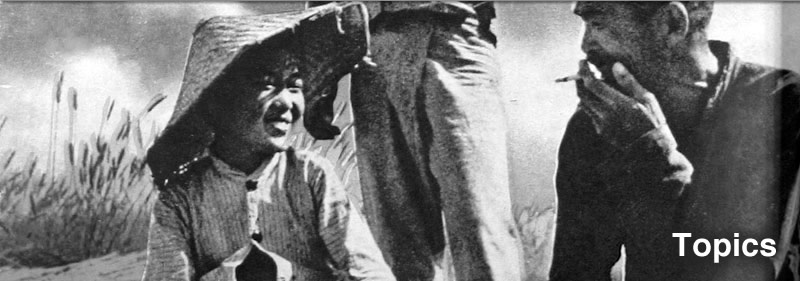 |
 |
|
|

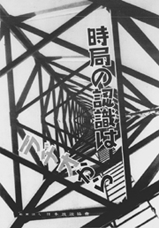 |
|
 |
| |
|
|
Shashin Shuho contains a variety of advertisements on the back of the front cover and on the back cover. In this section, we will highlight aspects of the social conditions in the early Showa era that can be seen in advertising, referring to a selection of advertisements from public organizations that appeared in the journal and other related documents. In addition to the advertisements introduced in this section, there is a variety of advertisements appearing in Shashin Shuho for products that are still familiar to people today. These advertisements also provide insight into the social conditions of that time.
|

|
|
|

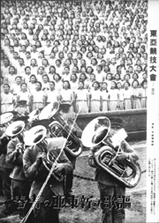 |
|
 |
| |
|
|
The International Olympic Committee (IOC) was established in 1894 in response to the call of Pierre de Coubertin from France, who advocated resurrecting the tradition of the ancient Olympic Games. The first modern Olympic Games were held in Athens in 1896. Japan’s first participation in the Summer Olympic Games was at the fifth Summer Olympics held in Stockholm in 1912 (and for the Winter Olympic Games, the second Winter Olympics held in Saint Moritz in 1928). In 1930, Japan began a promotional campaign spearheaded by Tokyo to host the Olympics. As the Olympics expanded, cities that hosted the Olympics came to be viewed as first class cities internationally. The desire to earn this recognition is what motivated Japan to make a bid for the Olympics. At the eleventh Berlin Olympic Games in 1936, it was decided that Tokyo would host the twelfth Olympic Games scheduled to be held between September 21 and October 6, 1940 (with Sapporo as a candidate for the Winter Olympic Games). However, following the outbreak of the Sino-Japanese War in 1937, the situation changed and opposition to holding the Olympics in Tokyo grew stronger both at home and abroad. Faced with this opposition, the Japanese government decided to call off the Olympics. This section will provide a brief look at the history of the Tokyo Olympics Games “that never were,” from the campaign to host the 1940 Olympics in Tokyo to the events leading up to its cancellation.
|

|
|
|

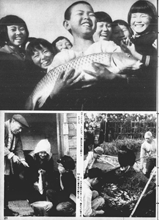 |
|
 |
| |
|
|
Shashin Shuho presents a variety of photos related to the lives of ordinary people in the early Showa era. These photos enable people today to obtain a large amount of information related to the social conditions during the war period. However, it is important to remember that Shashin Shuho was published as part of the government’s propaganda policies. Thus, it is best to examine this information together with other types of documents.
This section will show a selection of photos related to the lives of ordinary people depicted in Shashin Shuho together with related documents. It will also introduce the views expressed in Ankoku Nikki (A Diary of Darkness), the diary of author and critic Kiyoshi Kiyosawa, for matters that took place after December 1942. Kiyosawa’s diary is filled with detailed observations of the social conditions at that time.
The related documents presented here and the views expressed in the diary of Kiyoshi Kiyosawa described above will serve as the materials for examining the everyday lives of people. However, to get a broader perspective, we recommend examining these materials together with other public documents that can be browsed through the JACAR search system, along with other types of documents and information.
Kiyoshi Kiyosawa, whose views in his diary are introduced in this section, was born in Nagano Prefecture in 1890. He went to the United States in 1906 and graduated from university, after which he played an active part in a Japanese newspaper publishing company there. He returned to Japan in 1918 and began work as a journalist and a critic. With the suppression of free speech during the war period as a result of crackdowns by the authorities, Kiyosawa turned his attention to researching diplomatic history. He wrote a detailed diary from December 9, 1942 to May 5, 1945, shortly before he died of pneumonia on May 21, 1945. Titled Ankoku Nikki (A Diary of Darkness), it was published after his death and provides a detailed description of the conditions of Japanese society at that time.
In addition, the JACAR collection of documents also contains the content of lectures given by Kiyoshi Kiyosawa, such as the following lecture from July 1938.
|

|
|
|
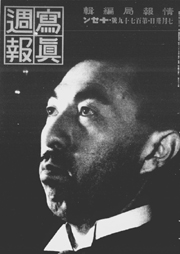 |
|
 |
| |
|
|
Just as the title of the journal suggests, each issue of Shashin Shuho contains a number of photographs (shashin). The subjects pictured in these photographs include well-known individuals of the time, such as prominent politicians. In addition, some of the individuals who took these photos would go on to enjoy successful careers as photographers and journalists. This section will introduce famous individuals who appeared in Shashin Shuho together with related documents.
|

|
|
|
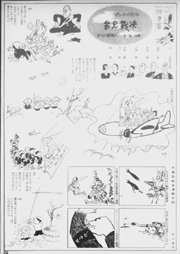 |
|
 |
| |
|
|
Shashin Shuho is clearly considered to be a form of magazine media due to its publishing style and page composition. This section will introduce a selection of cover pages and articles characteristic of Shashin Shuho by focusing on those which best capture the essence of Shashin Shuho as a magazine medium.
|
 |
|
|
|
|
| |

